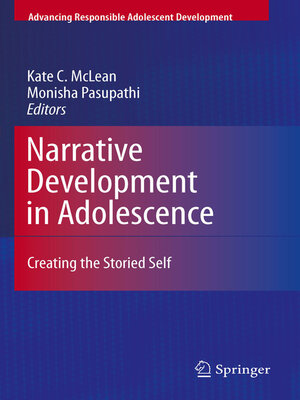Narrative Development in Adolescence
ebook ∣ Creating the Storied Self · Advancing Responsible Adolescent Development
By Kate C. McLean

Sign up to save your library
With an OverDrive account, you can save your favorite libraries for at-a-glance information about availability. Find out more about OverDrive accounts.
Find this title in Libby, the library reading app by OverDrive.



Search for a digital library with this title
Title found at these libraries:
| Loading... |
Monisha Pasupathi and Kate C. McLean Where Have You Been, Where Are You Going? Narrative Identity in Adolescence How can we help youth move from childhood to adulthood in the most effective and positive way possible? This is a question that parents, educators, researchers, and policy makers engage with every day. In this book, we explore the potential power of the stories that youth construct as one route for such movement. Our emphasis is on how those stories serve to build a sense of identity for youth and how the kinds of stories youth tell are informed by their broader contexts – from parents and friends to nationalities and history. Identity development, and in part- ular narrative identity development, concerns the ways in which adolescents must integrate their past and present and articulate and anticipate their futures (Erikson, 1968). Viewed in this way, identity development is not only unique to adol- cence (and emergent adulthood), but also intimately linked to childhood and to adulthood. The title for this chapter, borrowed from the Joyce Carol Oates story, highlights the precarious position of adolescence in relation to the construction of identity. In this story, the protagonist, poised between childhood and adulthood, navigates a series of encounters with relatively little awareness of either her childhood past or her potential adult futures. Her choices are risky and her future, at the end, looks dark.






